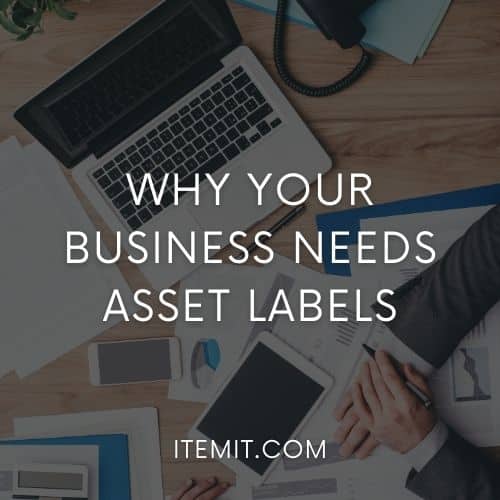Asset labels can help you create a robust asset management system. Asset management will help you keep better track of your business-critical tools and equipment.
The benefit of using asset labels is that they can help you create unique asset profiles of all of your things. So, you’ll be able to implement asset tracking to assist you with anything from IT asset management to construction tool tracking.
Overall, asset labels give you more accountability and more transparency over everything you own.
How Do Asset Labels Work?
Asset labels work by allowing you to link physical assets to online profiles. On these online profiles, you’ll be able to add critical data, including maintenance information and reminders.
The process is simple. Create your unique asset profiles and stick your asset labels onto your physical equipment. Then you can scan your labels into your asset tracking app.
This way, every time you scan an asset’s label, the asset’s profile will open, ready for you to view and update any information. The last seen location and the user who scanned the asset’s label will also update, allowing you to create a neat audit trail of where all of your assets have been and who has been interacting with them.
Your Asset Label Options
There are a variety of different types of asset labels that you can use. Each of them have slightly different functions, so it’s essential to know your assets and know what you’re hoping to get out of them when deciding which asset labels to use.
The standard labels are QR code asset tags. This is as it’s very easy to ensure that QR codes are unique. As all of your assets must be unique in your asset management system, you need to tag them with unique labels, too.
In a similar way, you’ll also be able to use barcodes. QR codes and barcodes will be customisable, so you’ll be able to purchase metal asset tags to track the equipment that goes through the most wear and tear.
However, it’s not always applicable to use asset labels that require a line-of-sight to scan. If you’re tracking high-value assets, for example, you may need to hide the asset’s label. In this case, you’ll be able to use RFID asset labels as these can be scanned from a greater distance and without a line-of-sight.
The Benefits Of itemit’s Asset Tracking Software
With itemit’s asset tracking software, you’ll be able to mix-and-match the asset labels you’re using to track your assets. Therefore, you’ll be able to use RFID asset labels for some of your higher value assets, but use QR code asset tags for others.
You can also use your own asset labels. So, if your assets are already tagged, if you’re using itemit, it’s an incredibly easy process of logging your assets onto the system and then instantly scanning them in.
There’s also a wealth of features that will help you maintain your assets using your asset tags, including the ability to audit and quick-add assets to locations.
To find out more about itemit’s features and how they can benefit you, you’ll be able to book a demo using the button below.
You can also contact us at team@itemit.com or on the phone at 01223 421611. You can also fill in the form below to start your 14-day free trial.
Why not check out these blogs:
The Benefits Of Medical Equipment Management Software
Why Asset Tags Need To Be Unique
How To Use An Anti-Theft Tool Tracker
Use Your Own Asset Labels!
Start your free 14-day trial now
Instant access. No credit card details required.


